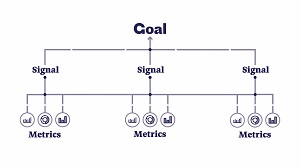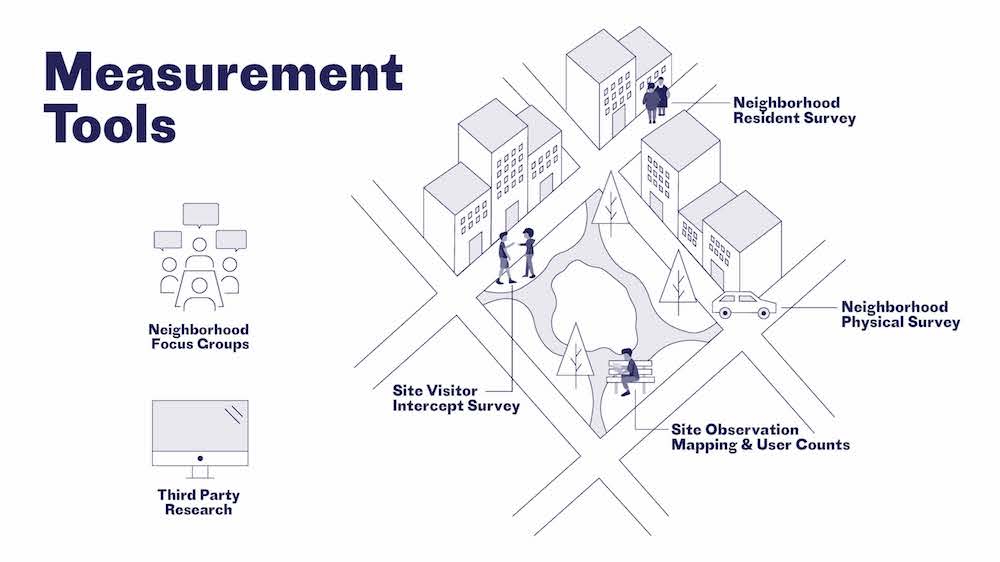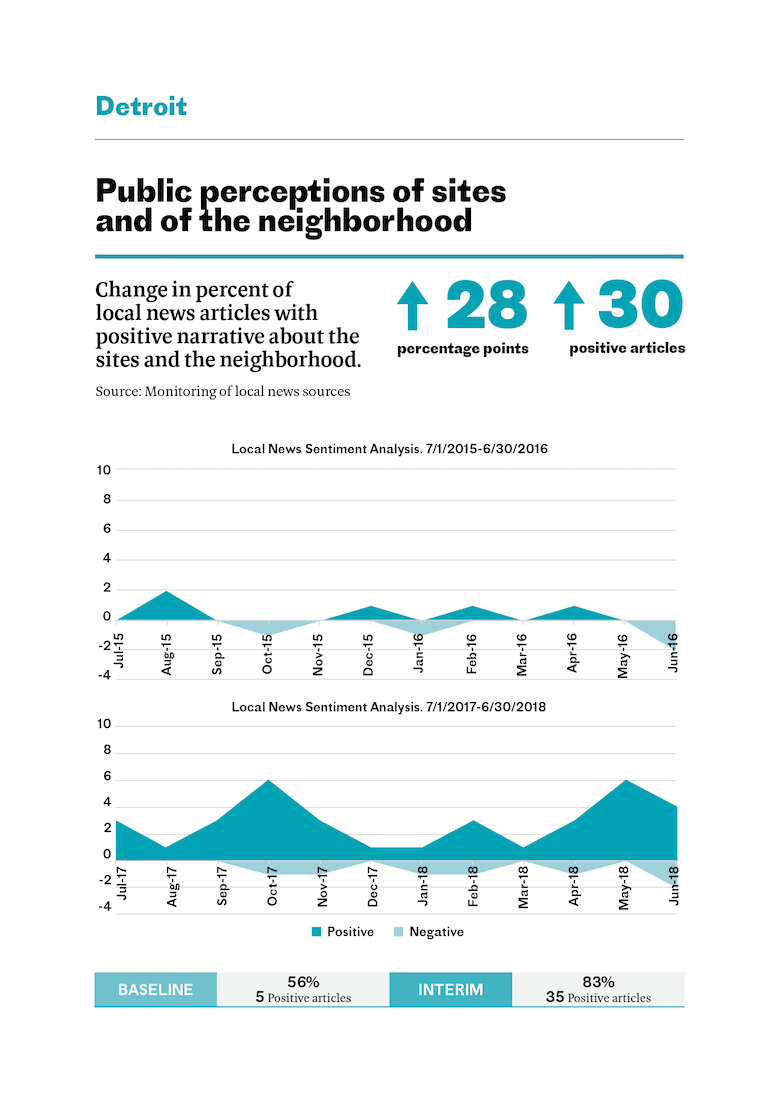
Bridget Marquis
Special to the Philanthropy Journal
By Bridget Marquis
In recent years, philanthropic organizations have begun to invest—sometimes in very big ways—in better parks, trails, open spaces and libraries. In 2014, the George Kaiser Foundation gave a record $350 million to Tulsa’s soon-to-be opened Gathering Place; in June, the John D. and Catherine T. MacArthur Foundation gave $5 million to build a Chicago Public Library at the planned Obama Presidential Center. Smaller foundations and community foundations are also supporting new and improved public spaces.
These investments in public places come at a crucial time for Americans. Nearly every trend line shows that the U.S. is a country in the grips of increased polarization, segregation, social isolation and economic inequality. Trust between people is in free fall. There is an urgent need to reverse these trends, which threaten people’s health and our very democracy. And one way to start is through reconnecting people—not online, but by creating inviting and shared public places.
But while our public spaces can play a pivotal role in taking on these decades-long trends of social and economic fragmentation, these civic assets come at the bottom of nearly every municipal budget. They are often seen as luxuries rather than critical for community success. And when budget cuts hit, they are often the first on the chopping block.
We need a new narrative on why to invest in our shared public spaces. Why these assets, in particular, are so important for our communities. However, unlike philanthropic investments in education and health, investments in our shared civic assets are rarely measured in ways that demonstrate their true impact. After a new park or library is built, it may be required to share data on the increase in visitors but not much else. No one asks: How are the users of this space benefiting? What benefits are surrounding neighborhoods reaping? And what impact did this investment have on our larger societal goals?
Measuring what matters
 Addressing this evidence gap is a core objective of Reimagining the Civic Commons, a $40 million initiative across five cities, funded by The JPB Foundation, the John S. and James L. Knight Foundation, The Kresge Foundation and The Rockefeller Foundation. Reimagining the Civic Commons seeks to create public places that drive social, environmental and economic change, and share what we are learning with other foundations, elected officials, nonprofits, parks departments and advocates along the way. Our aim is to demonstrate that strategic investments in these public spaces can connect people of all backgrounds, cultivate trust and create more resilient communities.
Addressing this evidence gap is a core objective of Reimagining the Civic Commons, a $40 million initiative across five cities, funded by The JPB Foundation, the John S. and James L. Knight Foundation, The Kresge Foundation and The Rockefeller Foundation. Reimagining the Civic Commons seeks to create public places that drive social, environmental and economic change, and share what we are learning with other foundations, elected officials, nonprofits, parks departments and advocates along the way. Our aim is to demonstrate that strategic investments in these public spaces can connect people of all backgrounds, cultivate trust and create more resilient communities.

Survey collection at the Memphis River Garden.
When we began in 2016, we knew to build a compelling argument, we needed more than a theory of change to build a compelling argument—we needed evidence of change. But when we looked at standard performance metrics for parks, trails and libraries, we found nothing that provided a convincing story. We found people measuring operational data points for parks and greenspaces like “number of acres mowed;” or “number of books in circulation” for libraries. These data points offer nothing in the form of a real argument for why to invest.
And so, we set out to create a new measurement framework to understand and collect the social impact of public space investments.
Data for impact
In 2016, we initiated a collaboration with learning partners City Observatory and Interface Studio to design such a measurement system. What we created together is easy to understand and connects directly to our four, larger goals that public spaces can uniquely deliver:
- Civic Engagement: Increased public life, stewardship of place and community trust;
 Socioeconomic Mixing: Creating places that attract and connect a greater diversity of people;
Socioeconomic Mixing: Creating places that attract and connect a greater diversity of people;- Environmental Sustainability: Improving the resiliency of neighborhoods and cities; and,
- Value Creation: Delivering economic value in ways that benefit neighbors and local businesses.
The metrics system we created includes three to four “signals” for each goal, with a handful of metrics under each, real-world data points that indicate if a park or library is headed in the right direction.
 For example, the signals connected to our overall civic engagement goal are “public life,” “stewardship and advocacy,” and “trust.” The public life signal measures hourly and weekly visits to a particular public space; stewardship and advocacy measures acts of support for a particular site, and trust measures the percentage of people who trust others, local institutions and local government after investment is made. So, if after investments in civic assets, we see more people engaging in public life, becoming stewards of or advocates for the civic commons, and expressing trust in others, then civic engagement in a particular neighborhood is on the rise.
For example, the signals connected to our overall civic engagement goal are “public life,” “stewardship and advocacy,” and “trust.” The public life signal measures hourly and weekly visits to a particular public space; stewardship and advocacy measures acts of support for a particular site, and trust measures the percentage of people who trust others, local institutions and local government after investment is made. So, if after investments in civic assets, we see more people engaging in public life, becoming stewards of or advocates for the civic commons, and expressing trust in others, then civic engagement in a particular neighborhood is on the rise.
In Detroit, data collection yields civic engagement benefits
The new measurement system we created is now being used in cities across the country. And teams putting it into practice are finding it beneficial to their work. For instance, in Detroit, a cross-sector team is working to transform publicly-owned vacant land and buildings in the Fitzgerald neighborhood into community assets like a park, greenway and people-oriented commercial corridor, is using our measurement framework to much success.
The Detroit team started with a baseline collection of data in 2017 using the tools developed by Reimagining the Civic Commons. And then completed an interim data collection in 2018. The data collected offers a snapshot in time on 65 different metrics; but perhaps even more importantly, the data collection process offered a unique opportunity to foster civic engagement and build trust. Detroit recruited, trained and hired local Fitzgerald neighborhood residents to be the principal field researchers and data collectors. The team is taking what if often seen as a wonky exercise and transforming it into an occasion for community engagement. Local residents are the ones knocking on doors to collect survey responses from their neighbors, observing public spaces and intercepting visitors to understand their perceptions and attitudes. Having local residents involved in this way has increased transparency, built trust and is growing the capacity of neighborhood leaders.
Data from Detroit’s latest metrics report, published earlier this year, shows that public perception of the civic commons sites and the surrounding neighborhood increased 28 percentage points and interest in homes in and near where Detroit’s civic commons project is located increased, with internet home search activity up 48 percent in the project’s zip code.
Tools for the field
Our ambition is to provide opportunities for this kind of measurement and analysis to more than just the five Reimagining the Civic Commons demonstration cities — we want any city interested in harnessing the power of data to have access as well. So we’ve made our tools open source for civic asset managers, community leaders, philanthropists and advocates who want to measure their investments in public space. Our tools include the overall measurement framework as well as observation map and intercept survey tools, which measure the impact of public space with core metrics like frequency of visits, acts of stewardship or advocacy, trust in others, perception of surrounding neighborhoods, and the income, racial and ethnic diversity of visitors. We will continue to develop and release measurement toolkits for social impact that can be used by those investing and managing public spaces all across the country.
 To create a movement of people ready to help in this endeavor, we believe data is needed to demonstrate the widespread beneficial impacts of the right investments.
To create a movement of people ready to help in this endeavor, we believe data is needed to demonstrate the widespread beneficial impacts of the right investments.
If you believe that public space in the place where our paths cross with people of all backgrounds, where a shared sense of identity is created, social capital is multiplied, trust is cultivated and our empathy for others is bolstered, we invite you to join us in building the rationale for further investment in this critical infrastructure for our communities.
Designed, operated and managed right—with investments that drive to beneficial outcomes for people—our parks, libraries, trails and community centers can reflect the highest aspirations for our communities, and for our very democracy.
And now we’ll have the evidence to prove it.
Bridget Marquis is Director of the Civic Commons Learning Network for Reimagining the Civic Commons, a collaboration of The JPB Foundation, John S. and James L. Knight Foundation, The Kresge Foundation and The Rockefeller Foundation and local partners transforming public spaces to foster engagement, equity, environmental sustainability and economic development in our cities. The Network provides tools and resources for civic asset and city leaders, funders and community advocates looking to measure and improve the performance of public spaces for the benefit of all.





